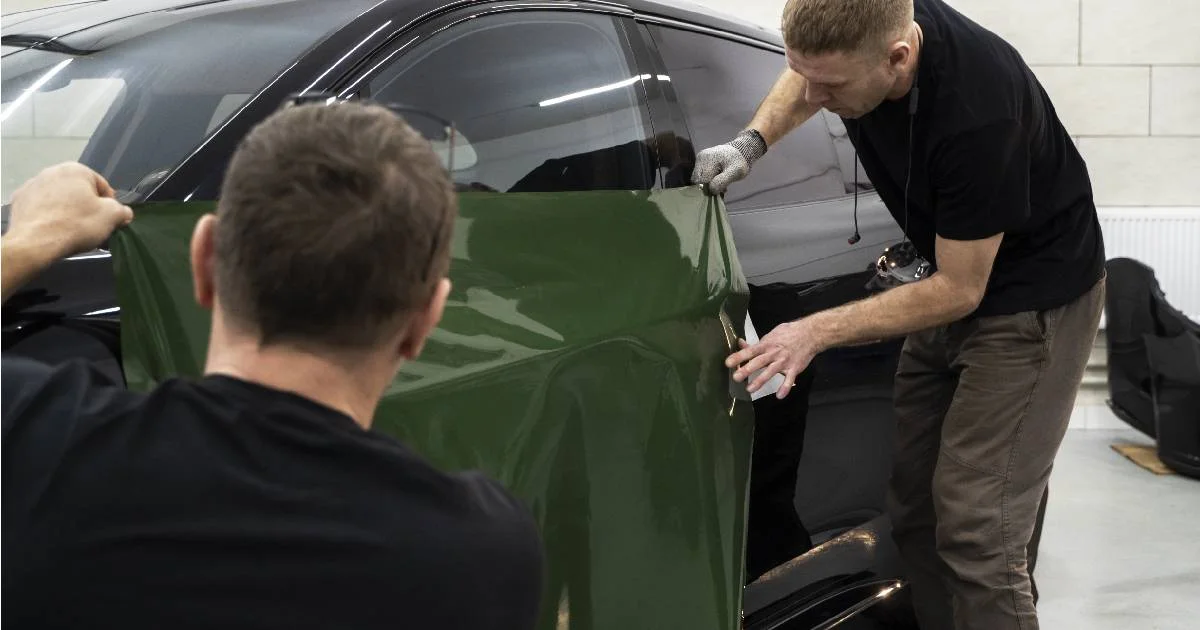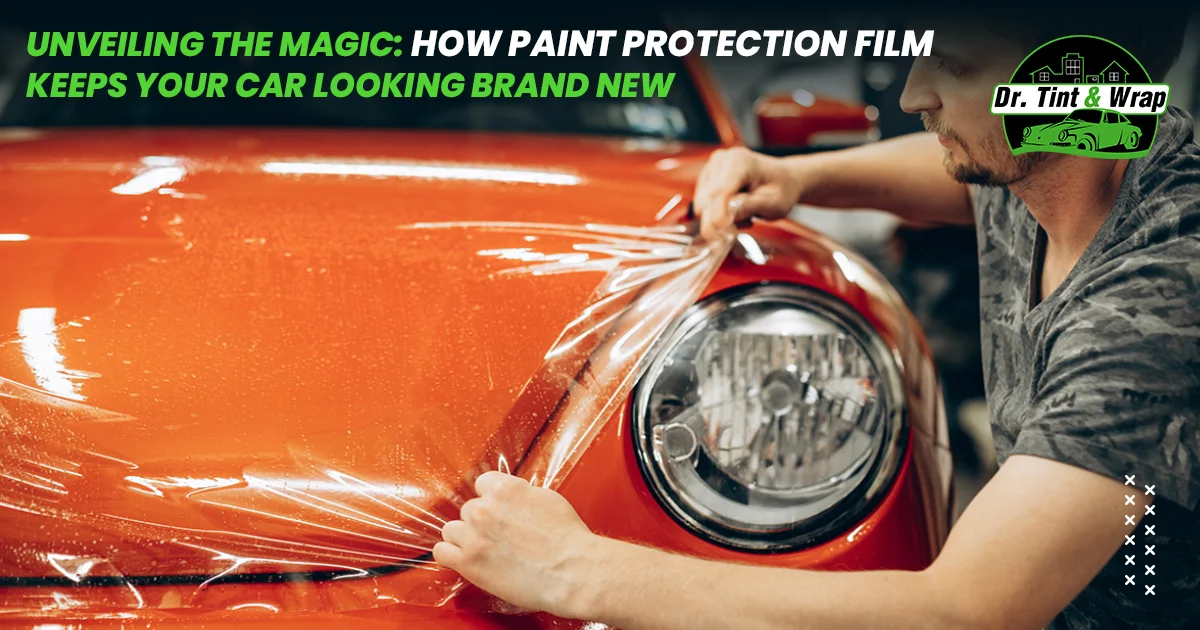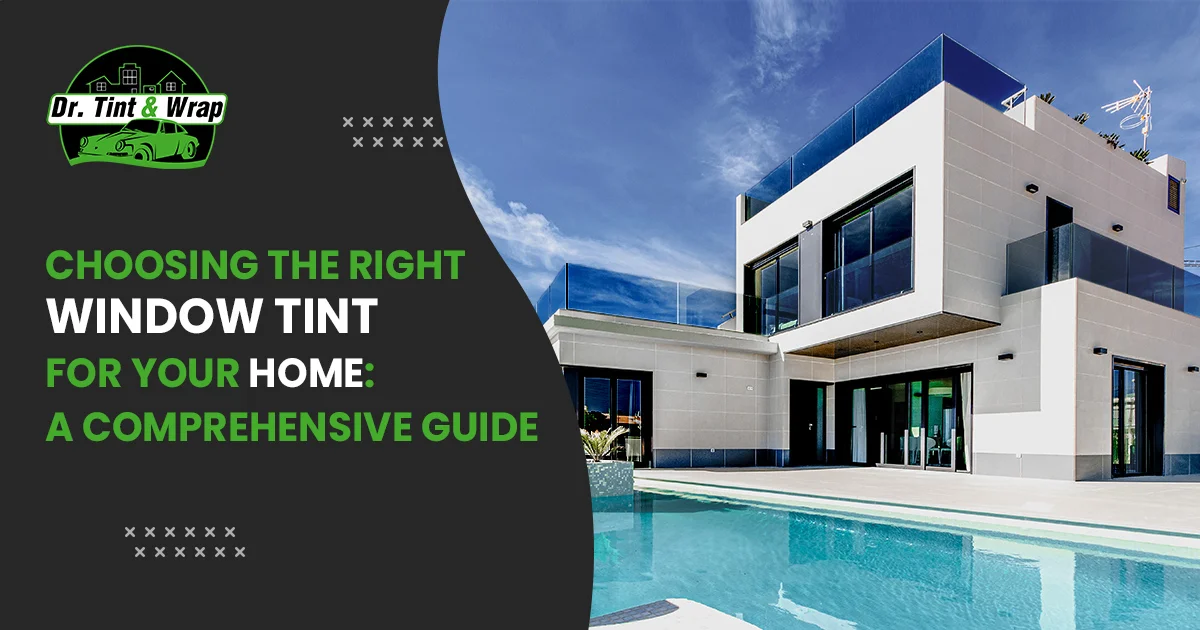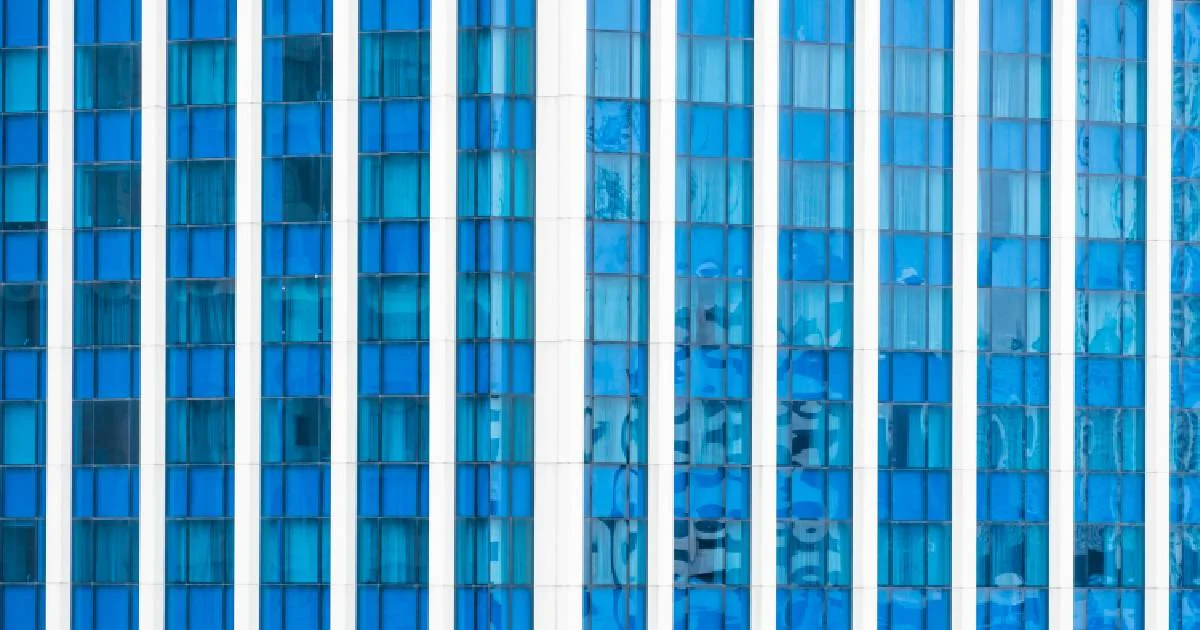
Vinyl Wrap vs. Paint: Making the Right Choice for Your Vehicle in Rotorua
01 Dec 2023, By AdminAre you considering a new look for your vehicle in Rotorua? When it comes to transforming the appearance of your car, two popular options stand out: vinyl wrap and traditional paint. Each method has its own set of advantages and considerations, making the decision a crucial one for car enthusiasts. In this post, we'll explore the pros and cons of vinyl wrap versus paint to help you make the right choice for your vehicle in Rotorua.
Vinyl Wrap Rotorua: A Trendy and Protective Option
Advantages of Vinyl Wrap
- Endless Design Possibilities: Vinyl wraps offer a wide range of colors, textures, and finishes, allowing you to unleash your creativity and achieve a unique look for your vehicle.
- Protection for Your Original Paint: Vinyl wraps act as a protective layer for your car's factory paint, shielding it from stone chips, road debris, and minor scratches.
- Removability: One of the significant advantages of vinyl wraps is that they are removable. If you want to change the look of your vehicle or return it to its original state, a vinyl wrap can be taken off without damaging the underlying paint.
- Cost-Effective: In many cases, vinyl wrapping can be a more cost-effective option than a full-paint job, making it an attractive choice for those on a budget.
Considerations for Vinyl Wrap
- Durability: While vinyl wraps provide protection, they may not be as durable as paint when it comes to resisting major impacts or harsh weather conditions.
- Professional Installation: For a flawless finish, it's crucial to have your vinyl wrap installed by a professional. Look for reputable "vehicle wrap near me" services in Rotorua to ensure quality work.
Vehicle Paint in Rotorua: Timeless Elegance with a Few Caveats
Advantages of Vehicle Paint
- Longevity: A well-executed paint job can last for many years, providing a durable and resilient finish.
- High-Quality Finish: Professional painters can achieve a high-quality, glossy finish that is often considered the gold standard in the automotive industry.
Considerations for Vehicle Paint
- Cost: A quality paint job can be more expensive than a vinyl wrap, especially if you opt for custom colors or intricate designs.
- Limited Design Options: While paint offers a classic and elegant look, it may not provide the same variety of design options as vinyl wraps.
- Permanent: Unlike vinyl wraps, paint is a permanent change to your vehicle's appearance. Reverting to the original look may require a significant investment.
Making the Right Choice
Ultimately, the decision between vinyl wrap and paint depends on your preferences, budget, and the desired level of customization. If you're looking for a versatile and cost-effective option with a range of design possibilities, a vinyl wrap in Rotorua might be the ideal choice. On the other hand, if you prioritize longevity and a timeless finish, a professional paint job could be the way to go.
Before making your decision, be sure to research reputable "vehicle wrap near me" services in Rotorua and consult with professionals to determine the best option for your specific vehicle and style preferences. Whether you choose the modern flair of a vinyl wrap or the timeless elegance of a paint job, transforming your vehicle in Rotorua is an exciting journey that reflects your unique taste and style.

Unveiling the Magic: How Paint Protection Film Keeps Your Car Looking Brand New
01 Dec 2023, By AdminWhen you invest in a new car, you're not just purchasing a means of transportation – you're acquiring a symbol of style, innovation, and modern engineering. Naturally, you'd want to keep your vehicle looking as pristine as the day you drove it off the lot. However, the harsh realities of the road – from gravel to road debris to the elements – can quickly take a toll on your car's exterior. This is where the magic of Paint Protection Film (PPF) comes into play.
What is Paint Protection Film?
Imagine a transparent shield that wraps around your car, shielding its delicate paintwork from the forces of nature. Paint Protection Film, often referred to as clear bra or PPF, is a thin, virtually invisible layer made from high-performance urethane material. Applied to your car's exterior surfaces, PPF acts as a robust barrier against a wide array of potential damage.
Unseen Armor: The Benefits of Paint Protection Film
1. Preserves Resale Value: A well-maintained exterior significantly enhances your car's resale value. Paint Protection Film safeguards your car's paint from chips, scratches, and fading, ensuring it maintains that fresh-off-the-lot appeal.
2. Invisible Protection: One of the remarkable features of PPF is its transparency. It shields your car without altering its appearance, allowing you to enjoy the original color and design without compromise.
3. Defends Against Debris: Whether it's rocks kicked up from the road or the stray shopping cart in a parking lot, PPF acts as a physical barrier against various forms of external damage.
4. UV Radiation Blocker: Prolonged exposure to the sun can lead to fading and discoloration of your car's paint. Paint Protection Film has built-in UV blockers that shield against these harmful rays, keeping your car looking vibrant and new.
5. Easy Maintenance: Cleaning and maintaining PPF is a breeze. Its smooth surface resists dirt, grime, and stains, allowing you to effortlessly wipe away contaminants and maintain that showroom shine.
6. Self-Healing Properties: Some premium PPF products possess self-healing properties. Minor scratches and swirl marks disappear when exposed to heat, leaving your car's surface immaculate.
The Application Process: A Craftsmanship Approach
Applying Paint Protection Film is a skillful process that demands precision and expertise. Trained professionals meticulously measure, cut, and place the film onto the vehicle's surface, ensuring a seamless fit that preserves the car's aesthetics. This attention to detail prevents unsightly edges and bubbles, providing you with a result that's both protective and visually appealing.
Investing in Long-Term Beauty
While some may view Paint Protection Film as an optional extra, it's crucial to consider the long-term benefits it offers. By investing in PPF, you're safeguarding your investment and ensuring your car remains a source of pride for years to come. With the advancements in material technology and application techniques, Paint Protection Film has evolved into a magical solution that maintains your car's allure, allowing you to drive confidently without the fear of road-induced blemishes.
In a world where we cherish the harmony between aesthetics and functionality, Paint Protection Film emerges as a remarkable innovation – an invisible shield that lets your car's beauty shine through while defending it against the challenges of the open road. So, the next time you admire a car that seems to defy the passage of time, remember that there might be a little magic in the form of Paint Protection Film.

Choosing the Right Window Tint for Your Home: A Comprehensive Guide
01 Dec 2023, By AdminWindows are the eyes of your home, providing natural light, ventilation, and a connection to the outside world. However, they can also be a source of problems, such as excessive heat, glare, and harmful UV rays. Window tinting offers a practical solution to these issues, but selecting the right window tint can be a daunting task. In this guide, we'll walk you through the process of choosing the appropriate window tint for your home based on your specific needs, climate, and window types.
1. Assess Your Needs:
Before diving into the world of window tinting, it's crucial to assess your specific requirements. Consider the following factors:
- Privacy: Do you need increased privacy without sacrificing natural light?
- Heat Reduction: Is your home excessively hot, especially during summer months?
- Glare Reduction: Do you struggle with glare from sunlight that affects your comfort and visibility?
- UV Protection: Are you concerned about fading furniture and flooring due to UV rays?
- Energy Efficiency: Are you looking to reduce energy costs by improving insulation?
2. Understand Different Types of Window Tints:
There are various types of window tints available, each designed to address specific issues:
- Solar Control Films: Ideal for heat and glare reduction, these films block UV rays and improve energy efficiency.
- Privacy Films: These tints provide privacy during the day while allowing natural light to enter your home.
- Security Films: Reinforce your windows for added security, protecting your home from break-ins and accidents.
- Decorative Films: Enhance aesthetics with decorative window films available in various patterns and designs.
3. Consider Your Climate:
The climate of your region plays a significant role in choosing the right window tint:
- Hot Climates: Opt for tints with high solar heat rejection and UV protection to keep your home cool and protect from sun damage.
- Cold Climates: Look for tints with insulating properties to retain indoor heat during winters, reducing heating costs.
4. Think About Window Types:
Different window types require different tinting solutions:
- Double-Pane Windows: Consult with a professional, as certain films can trap heat between the panes, potentially causing damage.
- Low-E Coated Windows: Use tints recommended by the window manufacturer to maintain the Low-E coating's effectiveness.
- Older Windows: Consider films that provide insulation, improving energy efficiency in older, less insulated windows.
5. Seek Professional Advice:
While there are DIY tinting kits available, consulting with a professional window tinting service is invaluable. They can assess your specific needs, recommend suitable products, and ensure proper installation, maximizing the tints' effectiveness and longevity.
6. Read Reviews and Get Samples:
Research online reviews and testimonials to learn about other homeowners' experiences with specific window tints. Additionally, request samples from manufacturers or service providers to physically see how different tints look and perform in your home environment.
7. Maintenance and Warranty:
Consider the maintenance requirements and warranty offered with the window tint. Some tints may require special cleaning methods to preserve their effectiveness, while others come with comprehensive warranties, ensuring long-term satisfaction.
In conclusion, choosing the right window tint for your home involves careful consideration of your specific needs, the climate you live in, and the types of windows you have. By understanding these factors and seeking professional guidance, you can enhance your home's comfort, energy efficiency, and overall aesthetics, making an informed choice that you'll appreciate for years to come.

How to Maintain and Care for Tinted Office Windows
01 Dec 2023, By AdminOffice window tinting is a fantastic way to enhance the comfort and aesthetic of your workspace. Not only does it provide privacy and reduce glare, but it also helps in energy conservation by blocking harmful UV rays and controlling heat. However, to keep your tinted windows looking great and functioning effectively, proper maintenance and care are essential. Here’s a comprehensive guide on how to maintain and care for your tinted office windows.
Understanding Office Window Tinting
Before diving into maintenance tips, it’s important to understand what office window tinting involves. Window tints are thin films applied to the interior or exterior of glass surfaces. These films are designed to block UV rays, reduce heat and glare, and offer privacy without compromising natural light. High-quality window tints can last for many years, but their longevity largely depends on how well they are maintained.
Immediate Care Post-Installation
Allow Proper Curing Time
After installation, window tinting requires time to cure. This process can take anywhere from a few days to a few weeks, depending on the type of tint and the weather conditions. During this period:
- Avoid cleaning the windows.
- Do not roll down tinted windows (if applicable) to prevent peeling or damage.
- Expect minor haziness or small water bubbles, which will disappear as the film dries and adheres completely to the glass.
Regular Cleaning Tips
Use Gentle Cleaning Solutions
When it’s time to clean your tinted windows, opt for a mild, non-abrasive cleaning solution. A simple mix of water and a small amount of dish soap works well. Avoid ammonia-based cleaners as they can degrade the tint film over time.
Soft Clothes and Tools
Use a soft microfiber cloth or a rubber squeegee for cleaning. These materials are gentle on the tint film and help avoid scratches. Always dampen the cloth slightly before wiping the windows to prevent dry rubbing.
Gentle Cleaning Technique
- Spray the Solution: Lightly spray the cleaning solution onto the window surface.
- Wipe Gently: Using a soft cloth, gently wipe the window in a circular motion to remove dirt and smudges.
- Dry with Care: Use a dry microfiber cloth to gently pat the window dry, avoiding any streaks.
Preventing Damage
- Avoid Sharp Objects: Keep sharp objects away from tinted windows to prevent accidental scratches or tears. Office equipment, badges, or pens can cause damage if they come into direct contact with the window film.
- Temperature Considerations: Extreme temperatures can affect the adhesive properties of window tints. Avoid exposing tinted windows to excessive heat or cold. Ensure that window coverings or shades are used to moderate the temperature around the tinted windows.
- Regular Inspections: Periodically inspect your tinted windows for signs of wear and tear. Look for peeling, bubbling, or scratches. Early detection of damage can help in taking timely corrective actions, such as reapplying the tint film if necessary.
Professional Maintenance
- Regular Professional Cleaning: Consider scheduling regular professional cleaning services for your office windows. Professionals have the right tools and expertise to clean tinted windows without causing damage, ensuring they remain in optimal condition.
- Tint Reapplication: Over time, even the best-maintained tints may need reapplication. Depending on the quality of the tint and environmental factors, window tints can last between 5 to 15 years. Professional reapplication ensures that your office windows continue to provide the benefits of tinting.
Conclusion
Maintaining and caring for tinted office windows is not a daunting task if you follow the right steps. By using gentle cleaning methods, preventing damage, and scheduling professional maintenance, you can ensure that your office window tinting remains effective and aesthetically pleasing for many years. Remember, well-maintained tinted windows not only enhance the look of your office but also contribute to a more comfortable and energy-efficient workspace.
